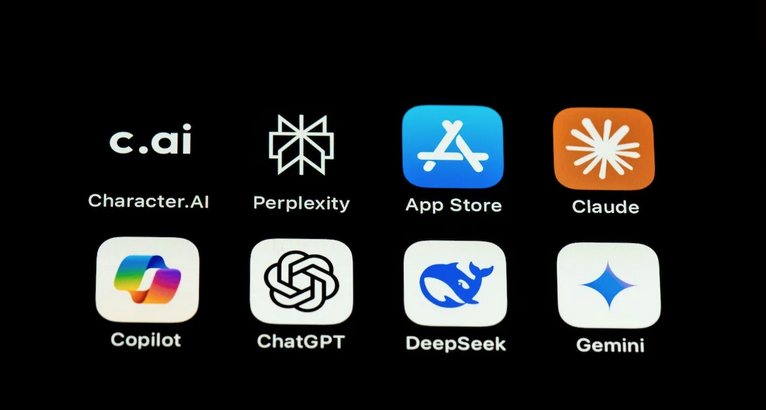Washington DC, May 4 ⏤ 7, 2025 ⏤ LiquidX was delighted to attend and be a gold sponsor for the 2025 Bankers Association for Finance and Trade (BAFT) Global Annual Meeting (GAM).
Alison Kao, LiquidX’s Managing Director of Product, sat on the panel “How Digital Advancements are Reshaping Customer Experience in International Banking.”
BAFT brings together the brightest minds and key players in global transaction banking, trade finance, and fintech.
As a leading provider of trade finance technology solutions, we are proud to be a part of this gathering, where we’ll engage with industry leaders, share insights, and explore innovative strategies to drive growth and efficiency.
The panel “How Digital Advancements are Reshaping Customer Experience in International Banking”, focused on two main areas:
- From your perspective, what has been the biggest change in banking technology that continues to drive the customer experience?
- How Liquid X has created a solution for modernizing trade technology platforms.
Let’s look at both in a bit more detail in this article.
A third topic that came up, across every panel and people talking about it between panels, is AI. The key takeaway is that AI will not replace humans, but AI will enable us and our customers to do work more efficiently so it is critical to be competitive.
Big changes are driving customer experience in banking and trade finance
The most impactful change in banking technology that continues to drive the customer experience is the evolution toward real-time digitalization and automation of financial processes.
Now more than ever, customers expect the same immediacy and transparency from their financial institutions that they’ve grown accustomed to in other areas of life — such as tracking a package being delivered, the real-time status of a flight, or seeing a mobile check deposit clear. These more immediate customer service expectations have reshaped how banks design and deliver digital, mobile-first services.
Modern banking platforms now offer real-time or near real-time visibility into the status of transactions, account changes, and other critical actions. This transformation has been made possible through the digitalization and automation of formerly manual or paper-based processes.
When workflows are automated and digital, banks can now give customers immediate action points, prompts, and help — all from a mobile app or web-based account.
One of the most significant benefits of this shift is the creation of a transparent, auditable transaction history. Clients can now easily track the progress of a loan application, investment order, or account adjustment without having to speak to a customer service agent.
This means that customers are empowered and able to take control of their financial decisions, manage portfolios more effectively, and resolve pending actions with greater confidence.
This move in banking toward real-time, data-driven experiences has reduced uncertainty and delays, making the whole experience much better. It has created a greater sense of trust and engagement, aligning the banking experience more closely with the speed and expectations of today’s digital-first consumers.

Alison Kao, LiquidX’s Managing Director of Product, taking part in the BAFT panel “How Digital Advancements are Reshaping Customer Experience in International Banking.” To her left is the moderator, Michael Babbitt, SVP, Head of International Trade at Synovus. And to Alison’s right are her fellow panelists: Leonardo Baccala, Global Lead Product Development – Trade Working Capital Solutions at Citi, and Patrik Zekkar, CEO of Enigio.
LiquidX’s modernized trade finance solutions
The key to modernizing is enabling highly configurable workflows to meet the needs of our bank client and their customers. We think of our workflows as like Google Maps for trade finance: Allowing clients to input parameters to guide invoices to their lanes and a defined path to the appropriate funder and pricing.
When a client has Trade, TradeHub, and TradeOps, they can track the milestones for each transaction or invoice lifecycle from end-to-end.
With LiquidX, banks can launch or increase the following financial programs:
- Payables programs so buyers can extend payment terms while suppliers receive early payments, enhancing working capital for both parties.
- Receivables programs so businesses can convert their receivables into immediate cash, improving cash flow to help navigate volatile times.
As a bank, you could soon implement a whole suite of trade finance services for cross-border customers.
This is much easier to do with the right trade finance software partner. LiquidX is the only suite of trade finance solutions that banks can use to implement and manage trade finance programs without increasing headcount or investing in expensive in-house software.
Here’s what you can benefit from when you partner with LiquidX:
- Trade finance software that can take in any invoice format (e.g., XLSX, PDF, etc.), and use that as workable data downstream across the trade lifecycle.
- Automatically digitizes assets in the front office (Trade).
- Manages portfolio risk with TradeHub.
- Make significant back office savings (TradeOps); up to 50% savings compared to in-house back office software.
- Can handle reconciliation challenges for global and regional banks (InMatch module).
- Includes the advantages of a deep partnership with Broadridge (NYSE: BR), a trusted global fintech leader. Broadridge is LiquidX’s largest committed investor and strategic operational services provider for payment processing, account reconciliation, and global operational scalability.
LiquidX is the only single-source solution for empowering an entire trade finance business. Combined with our partner Broadridge, we support financial institutions to provide working capital solutions to their corporate clients in a single, intuitive interface.
The impact of AI in trade finance and banking
Will AI radically change banking, finance, and trade finance in particular?
Yes, no, maybe, or it’s too early to say.

Naturally, AI was constantly mentioned in conversations. It represents a worry, an opportunity, and something that the financial sector can’t ignore.
The general consensus is that AI will not replace humans.
However, as many in the sector are already finding, AI will enable us and our customers to do work more efficiently, so it is critical to be competitive.
PwC is calling AI the “$15.7 trillion game changer.”
PWC is predicting that AI could: “Contribute up to $15.7 trillion to the global economy in 2030, more than the current output of China and India combined.”
This tremendous opportunity for growth is one of the many reasons investors are so excited about AI.
In recent years, investors, tech and corporate giants, universities, and governments have invested $1 trillion into AI startups, scaleups, hardware manufacturers, and utilities to keep massive data centers operational for dozens of new AI models.
It’s one of the reasons OpenAI is currently worth $157 billion.
In trade finance, one use case for AI is making risk management more cost-effective.
An EY article notes that: “On average, a large trade finance bank can spend anywhere from $25m to $42m annually on risk, compliance, sanctions and anti-money laundering (AML) tasks – all without growing its business.”
One of the reasons for this is that trade finance is still stuck in manual and outdated ways of working.
Manual work takes time and costs money, which is why banks and financial providers in the trade finance space spend so much money on it.
AI and digital tools with automation embedded into them can dramatically reduce the need for manual work, and the cost of risk management in trade finance.
💡Find out more: How AI is Changing Trade Finance Risk Management
Compared to other financial asset classes, trade finance is still too heavily reliant on emails, paper, and even fax.
Banks that continue to rely on old methods and outdated in-house or custom-built software risk being left behind.
The only way to implement trade finance successfully, without scaling headcount and costs, is to partner with a provider who can handle everything for your bank.
Not only that, but working with a trusted, award-winning partner like LiquidX means that your whole trade finance suite can be implemented white-label. Find out more about the LiquidX Partner Program (LPP).
LiquidX’s suite of trade finance solutions can handle everything, with a smooth-running turnkey front-, middle- and back-office operation that manages the entire origination to reconciliation lifecycle.
Here’s another great reason to work with us! In December 2024, Global Business & Finance Magazine awarded LiquidX with three awards for the second year in a row:
- Best Digital Solutions For Global Trade, United States 2025
- Best Technology Vendor Of The Year, United States 2025
- Best Fintech For Trade, United States 2025
Banks and asset managers: To request a demo of our trade finance distribution solutions, click here.
Article co-authored by Alison Kao, LiquidX’s Managing Director of Product.
With over 15 years of experience transforming global trade finance, Alison leads the strategy, design, and delivery of digital trade products that serve the evolving needs of corporates, banks, and asset managers worldwide.
Alison oversees a platform that supports supply chain finance, receivables finance, and reconciliations, which have significantly scaled LiquidX’s global client base and user engagement.
Before joining LiquidX, Alison managed global receivables finance at Bank of America to develop and launch innovative trade solutions. Her career spans both fintech and institutional banking, enabling her to bridge client needs with cutting-edge digital capabilities. Alison holds a degree in Industrial and Systems Engineering from Georgia Tech and brings a deep passion for mentorship and animal rescue to everything she does.
